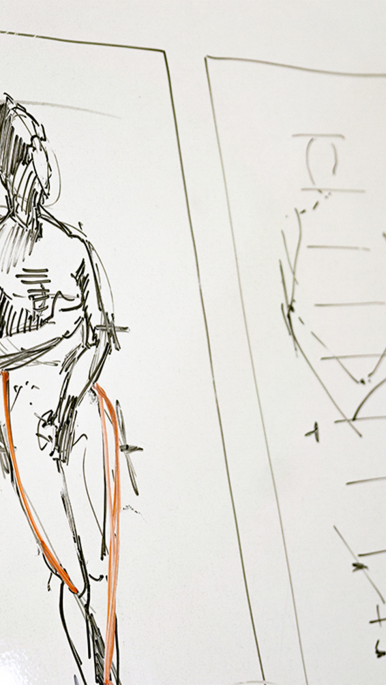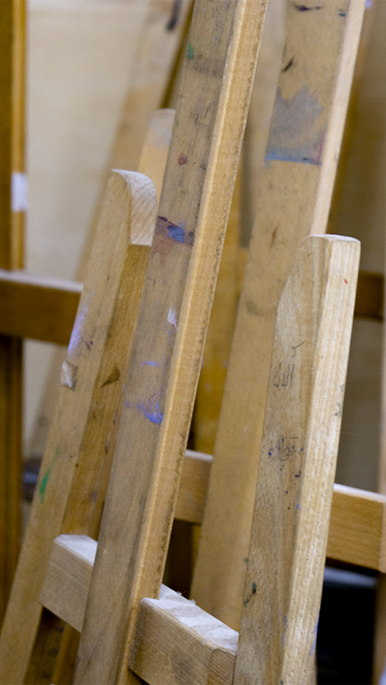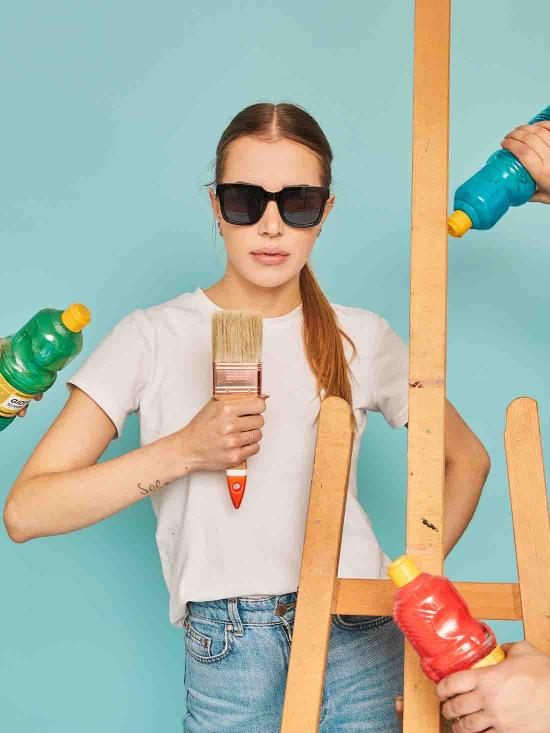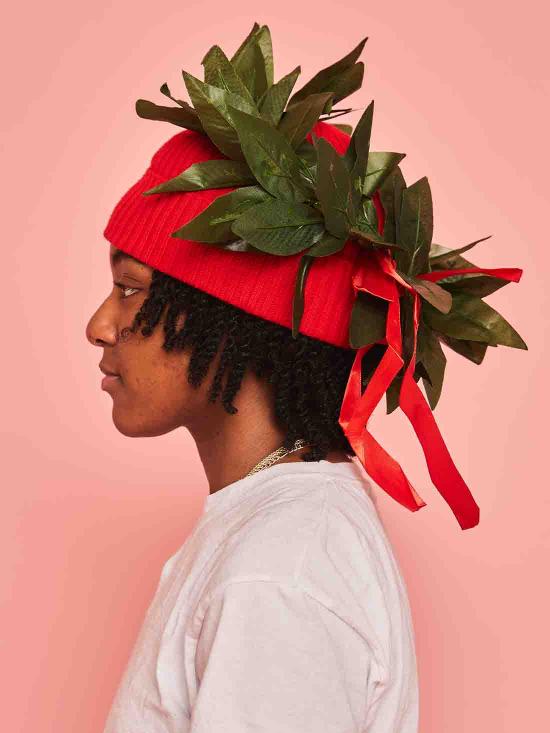Liberal Arts Courses for American Students


ACCF ITLN 101 Elementary Italian
ACCF ITLN 102 Elementary Italian II
ACCF ITLN 201 Intermediate Italian
ACCF ITLN 202 Intermediate Italian II
ACCF ITLN 301 Advanced Italian
ACCF SOIT 360 Italian Style and Culture
ACCF AHRA 310 History of Italian Renaissance Art
ACCF AHMI 310 The Life and Works of Michelangelo
ACCF FDTC 390 History of 20 th Century Fashion
ACCF LIIT 321 Medieval and Renaissance Literature
ACCF LIIT 320 Contemporary Italian Literature
ACCF MSIC 310 Italian Cinema
ACCF POIT 350 Italy in the European Union
ACCF SALD 110 Life Drawing
ACCF SASF 110 Sketching Florence
ACCF SAPT 110 Painting Techniques
ACCF SAPF 310 Photographing Florence
ACCF TDTP 190 Printing on Textiles
ACCF SAMM 310 Mixed Media
ACCF LACA 390 History of Contemporary Art 1
ACF LACA 490 History of Contemporary Art 2
ACCF LAVA 490 Latest Trends in Visual Arts
ACCF LAAA 490 Aesthetics
ACCF LATP 490 Theory of Perception and Psychology of Form
ACCF ITLN 101S Elementary Italian - summer
ACCF SAPT 110S Painting Techniques - summer
ACCF SASF 110S Sketching Florence - summer
ACCF AHMI 310S The Life and Works of Michelangelo - summer
ACCF SAPF 310S Photographing Florence – summer
ACCF SOIT 360S Italian Style and Culture – summer
ACCF ITLN 101: Elementary Italian I
This introduction to the Italian language uses innovative methods to make learning lively and effective. The course begins from the most elementary communicative needs for salutations and personal identification. Students learn to form questions and answers about information relative to the world in which they find themselves. This work is backed up by an in-depth study of grammar to provide the student with a morpho-syntactical basis. Exercises will include games, situational studies, instruments through which the student has the possibility to use the grammatical structures and the vocabulary acquired. Course work corresponds to European Framework level A-1.
ACCF ITLN 102: Elementary Italian II
This course is a continuation of ITLN 101, with emphasis on conversation and the use of elementary and intermediate grammar covered during the lessons. Audio-visuals are used such as films and video clips to simulate typical situations and to stimulate conversation. Course work corresponds to European Framework level A-2.
ACCF ITLN 201: Intermediate Italian I
The intermediate course in Italian language, grammar, vocabulary and conversation is supported by video presentations of topical situations for conversation and increasing comprehension. Exercises will include reading newspapers, games, texts, situational studies, instruments through which the student has the possibility to use the grammatical structures and the vocabulary acquired up to that point. Course work corresponds to European Framework level B-1.
ACCF ITLN 202: Intermediate Italian II
The intermediate course in Italian language, grammar, vocabulary and conversation is supported by video presentations of topical situations for conversation and increasing comprehension. Exercises will include reading newspapers, games, texts, situational studies, instruments through which the student has the possibility to use the grammatical structures and the vocabulary acquired up to that point. Course work corresponds to European Framework level B-2.
ACCF ITLN 301: Advanced Italian Advanced course in Italian language.
Advanced composition skills and conversation supported by video presentations of topical situations for conversation and increasing comprehension. Course work corresponds to European Framework level C-1.
ACCF SOIT 360: Italian Style and Culture
This course will explore the multifaceted categories regarding the current notion of “Italy”, considering the country’s history and development. Students will be guided into an in-depth analysis of multiple aspects of Italian identity as it is manifested in a variety of products and expressions (language and media; food and handicrafts; design and fashion), seen in the context of the deep structure and constant changes in Italian society. The focus will be on different disciplines ranging from theories to final products.The course is organized into two parts:
Part I: we will analyze the complex question of Italian identity in social and historical context;
Part II: we will explore major aspects of Italian culture, especially the postwar period up to the present time.
Subjects considered include Cinema, Media, Craft and Food. Students rise above initial perceptions and stereotypes to explore the texture and reasons of Italy’s many striking contradictions: beauty and squalor, wealth and poverty, and so on. The course asks whether we can define an Italian style or styles. If so, what is the secret of its enduring success, which seems to be a mixture of quality, imagination, and force?
ACCF AHRA 310: History Italian Renaissance Art
This course offers an introduction to the painting, sculpture and architecture of the 15th and 16th centuries. Special attention is given to Florence and its monuments and to key figures including Donatello, Botticelli, Leonardo and Michelangelo. The primary focus will be on stylistic and typological developments. Artwork will be considered within the contexts of patronage, biography, and the broader cultural and social life of the period.
ACCF AHMI 310: The Life and Works of Michelangelo
This course examines the life and work in painting, sculpture and architecture of Michelangelo Buonarroti. In the course of examining his individual works, we will consider how the political and cultural context influenced his artistic production and his response to these factors as well as the particularities of each commission. We will discuss the relationship of his work to that of his contemporaries and successors, both in terms of style and the myth of the artist.
ACCF FDTC 390: History of 20 th Century Fashion
This course explores the historical development of fashion in the 20th century, examining both high and popular fashion, mainly in Europe, placing fashion products and concepts within the social, cultural and economic context. In this introductory course the emphasis is on these interconnections, but some elementary notions of fFashion theory, especially in regard to gender and marketing, are addressed. The multifaceted cultural phenomenon of haute couture (high fashion) is the course leitmotif. The work and impact of notable designers receives special attention. Students also consider the relationship between fashion and the principal Western cities, such as Paris, London and Milan. Lastly, the course also offers an extended reflection about the very notion of “fashion”.
ACCF LIIT 321: Medieval and Renaissance Literature
This is an introductory course in Medieval and Renaissance Italian Literature that has its main focus on Renaissance short tales (novelle), which will be read as a way to explore the societies and cultural environment in which they were born. After a first part dedicated to Dante Alighieri (Divine Comedy ) and Francesco Petrarca, the subject of the course will be short tales written by some of the most important prose writers of all times, including Giovanni Boccaccio, Lorenzo il Magnifico, Niccolo’ Machiavelli, Giorgio Vasari, Benvenuto Cellini and Masuccio Salernitano.
ACCF LIIT 320: Contemporary Italian Literature
This is an introductory course in modern & contemporary Italian literature. The course will focus mainly on the development of Italian narrative from the beginning of 20th Century to the contemporary era. Authors studied will include classics such as Svevo, Pirandello, Calvino, Gadda, Morante as well as contemporary authors such as Ammanniti, Camilleri, Baricco and Saviano. The course will provide an interdisciplinary introduction to the culture of modern Italy. Students will be stimulated to develop both critical thinking and a sensitive approach to the texts they will read. They will also study the relationship between literature and other media (liberal arts, photography and cinema). The course will be taught in English. Likewise, primary sources will be in English. Questions on the language and the stylistic characteristics of the original texts, however, may be examined. As the program is set in Florence, the course will try to take advantage of some of the infinite possibilities offered by the city. The course may also include walks around Florence, in order to link the texts read to the history and geography of Florence and the surroundings. Extracurricular activities of the same kind will be strongly encouraged. During the course students will write short papers on literary texts or on scholarly articles, in order to exercise their reading comprehension and improve their academic writing.
ACCF MSIC 310: Italian Cinema
The course gives the students an overview of Italian Cinema, its genres, movements, from the silent era to the present. The focus is primarily about Italian cinema as an art form, with the director paying a key role. Students will be introduced to the world and ideas of famous film directors such as Rossellini, De Sica, Visconti, Fellini, Antonioni, Leone, Bertolucci. Films will be deeply analysed and compared in their own stylistic, technical and conceptual aspects. Particular attention will be given to Neorealism, a cinematic era that had a world-wide influence and still persists in today’s movies. Films made in Italy have always been characterised by a close link to Italian literature and current social problems. Historical periods such as Fascism, the economic boom, political protests and their impact on Italian society and culture will be taken into consideration. Italian film genres, such as comedy Italian style, spaghetti western, peplum, poliziesco will be also introduced and analyzed. Special emphasis will be also given to contemporary films in order to understand current issues of Italian society and culture.
ACCF POIT 350: Italy in the European Union
This course is organized on the historical development of national and international interests in both Italy and Europe as a whole between WWII and the present. With Italy as a founding EU member committed to the project of peaceful unity, the narratives intertwine. Various issues - cultural, social, political, economic - are addressed. Topics include: the EU and major problems in contemporary Italy; the preservation of Italian national interests; the EU in global and American perspective.
ACCF SALD 110: Life Drawing
This is a studio art course of regular practical exercises which develop the student’s observational and artistic skills in drawing the human figure (both male and female) in different positions and proportions. Photographs, drawings and live models will be used as the medium of instruction for teaching students how to observe, draw and develop a personalized style of representing the human body. Drawings will be done in pencil.
SASF 110: Sketching Florence Sketching
Florence is a freehand drawing course, designed for both beginners and advanced students. The course is divided into two modules.
1. In the first module students will draw on-site different Florentine monuments, landscapes and architecture, some of these well-known others less but equally beautiful or interesting. The lessons time will also be dedicated to some drawing exercises in class. The learning process will be completed with the homework. The main objective of this module is to help students acquire and/or deepen their drawing skills while they gain a deeper knowledge of the Florentine environment.
2. The second module will be dedicated to a final project: the students are asked to think of what they have seen of Florence so far in order to develop a personal series of six drawings. The interpretation each student will give to the theme will be defined at the end of the first module. The main objective of this module is to develop the students’ drawing techniques together with their knowledge of the city of Florence in a main work.
ACCF SAPT 110: Painting Techniques
This is an oil painting course open to all students. Materials and techniques are covered extensively to provide a solid foundation. The class meets weekly in the studio and also outside at various sites in Florence. Still-life, landscape and street scenes from life as well as the use of two- dimensional images provide the subject matter for the study of composition, color, and value in oil painting. Particular attention is given to the translation of nature into painting with an emphasis on individual creativity and experimentation. Looking assignments to museums along with individual and group critiques aid in sharpening students’ perceptive abilities, understanding of two-dimensional organization and introduce them to the language and issues in painting. There are no prerequisites for this course.
ACCF SAPF 310: Photographing Florence
The first purpose of the course is to give the students the mastery of the photographic medium and the ability to produce whatever image they may desire. Each camera setting will be analyzed and experimented in class through direct experience. Students will also learn how to manage camera files: how to archive, which file encoding format to use, how to resize appropriately and use post-production basics. The second purpose of the course is to introduce the student to visual language mechanisms. As a final assignment students will develop an individual project, consisting of a personal blog made up of visual and non-visual content. The student will have to identify something in his/her own Florence experience and develop it into a series of images and written content. The result should not be a collection of single shots, but rather a coherent body of work developing a clearly defined subject through an adequate visual strategy. Theoretical lessons will alternate with field trip and editing activities. The students will experiment autonomously but at the same time under the guidance of the teacher. The students will face individual and group reviews where they will be expected to comment on theirs and others’ work.
ACCF TDTP 190: Printing on Textiles
The student will learn some different techniques related to textile printing and will make creative impressions on fabric. The three techniques we will practice during the course are:
Linocut/block printing on fabric
Mono printing on fabric
Stencil on fabric
The lessons will be mostly practical, including slides and explanations. Students will improve their knowledge of mark-making on fabric to reach a professional level of skill.
ACCF SAMM 310 Mixed Media
This is a studio art course designed for beginning and intermediate students, although more advanced students will be given the opportunity for individual guidance. The course is structured on five projects. Each one will involve the use of different techniques and materials. The projects are: plaster cast, clay modeling, 3D collage, lino cut and micro installation.
ACCF LACA 390 History of Contemporary Art 1
Part of the course will consist in visiting the most important museums and galleries of contemporary art in Florence. The other part is theoretical, with explanations, slides, videos, and research (individual and in groups). At the end of the course, the student will be capable of identifying, analyzing, understanding, comparing and presenting the biggest movements and artists of the last century.
ACF LACA 490 History of Contemporary Art 2
The purpose of the course is to increase and consolidate the knowledge obtained in the previous courses. The student will learn how to identify, analyze, compare and present the main artistic movements and their main artists from the late 20th century through the beginning of the 21st century. Particular attention will be given to the “Augmented Art” as well as “Relational Art,” Web Art, Video Art, Street Art etc. Part of the course will consist of visiting the most important museums and galleries of contemporary art in Tuscany and in Florence such as Palazzo Strozzi, Museo del Novecento, Museo Pecci-Prato, Galleria Continua in San Gimignano, Galleria Tornabuoni, Galleria Secci, Galleria Frittelli, Galleria Poggiali & Forconi and many others.
ACCF LAVA 490
Latest Trends in Visual Arts This course offers a very dynamic approach, workshop-like, focusing on the analysis of the most recent art trends. Research and analysis will largely be carried out directly on the sources, namely through contemporary art works and exhibits, interviews and statements by the artists themselves, and their most important art projects. The national and international scene will be explored, without of course excluding the local context, with critical readings and insights in a real '' work in progress.” The course will inspire students to search for a personal orientation in the increasingly complex scenario of current visual arts.
ACCF LAAA 490 Aesthetics
The course will present the evolution of the most relevant subjects of Aesthetics, with special attention given to the ideas of Beauty and Art. The development of these subjects will start with the first attempts of aesthetics (Classical Greece) and will arrive to the present, when the interaction among Aesthetics, Design and Fashion has now become a necessary territory where these three disciplines converge.
ACCF LATP 490 Theory of Perception and Psychology of Form
This course introduces fundamental aspects of visual perception principles and theories, with the objective of laying the foundations for correct planning in the design field. Students will complete practical exercises, research projects and essays related to these principles, working individually and in groups. The course aims to introduce students to the world of design through original and experimental exercises and critical analysis, so that they can apply these basic principles to communicate design messages.
ACCF ITLN 101S Elementary Italian – summer
In this course the stress is on the ability to communicate well in simple conversations in a range of real-life situations. A working knowledge of the basic structure and grammar of Italian is achieved. Through language, students underscore their wider comprehension of Italian culture.
ACCF SAPT 110S Painting Techniques – summer
This is an introductory level painting course. Materials and techniques are covered extensively to provide a solid foundation. Individual and group critiques familiarize students with both the language and reading of two dimensional images. Classes meet weekly in the studio and also outside at various sites in Florence. Still-life, landscape, and city scenes from life and from two- dimensional images provide the subject matter for the study of composition, color, and value in oil painting. Other media may be used for a portion of the course. Particular attention is given to the translation of nature into painting with an emphasis on individual creativity and experimentation. Looking assignments to museums, exhibits and galleries enable students to develop a critical eye for two dimensional organization. Individual and group critiques aid in sharpening students perceptive abilities and introduce them to the language and issues in painting.
ACCF SASF 110S Sketching Florence – summer
This is a drawing course which takes place in the studio as well as outside in the center of Florence. It offers and in-depth discovery of individual creativity and of this multi-faceted city. Particular emphasis is placed on the exploration of a variety of different techniques, both traditional and experimental with various dry and wet media. Open to all levels, this course covers fundamentals for beginners and challenges the more experienced to undertake new approaches to drawing. Students create a book which serves as the final exam as well as a record of their journey of discovery. The class meets for three hours weekly and daily independent work is required. There are no prerequisites for the course.
ACCF AHMI 310S The Life and Works of Michelangelo – summer
This course examines the life and work in painting, sculpture and architecture of Michelangelo Buonarroti. Michelangelo’s virtuosity dominated his era and his legacy looms large, not only for his artistic contribution and innovation, but also for the changing role of the artist. In the course of examining his individual works, we will consider how the political and cultural context influenced his artistic production and his response to these factors as well as the particularities of each commission. We will discuss the relationship of his work to that of his contemporaries and successors, both in terms of style and the myth of the artist.
ACCF SAPF 310S Photographing Florence – summer
The course will be directed in an open and fresh manner, providing the students with lectures and critique based on the progressive development of the class as the students discover not only the secrets of photography, but of one of the most beautiful cities in the world. Each student will be provided with a tailored approach in this summer course where the wonderful scenery of Florence will not just function as a frame but as the subject itself.
ACCF SOIT 360S Italian Style and Culture – summer
This course will explore the multifaceted categories regarding the current notion of “Italy”, considering the country’s history and development. Students will be guided into an in-depth analysis of multiple aspects of Italian identity as it is manifested in a variety of products and expressions (language and media; food and handicrafts; design and fashion), seen in the context of the deep structure and constant changes in Italian society.
Other courses
-

FOUNDATION YEAR
Preparatory course for undergraduate programs
-

DRAWING AND PAINTING
Professional course
-

DRAWING AND PAINTING
Summer course
-

ITALIAN LANGUAGE SUMMER COURSE
Summer course
